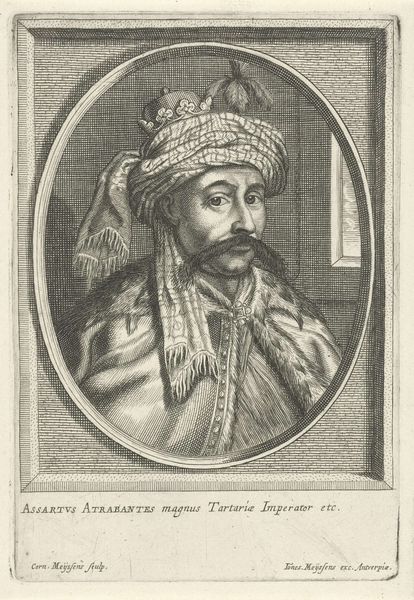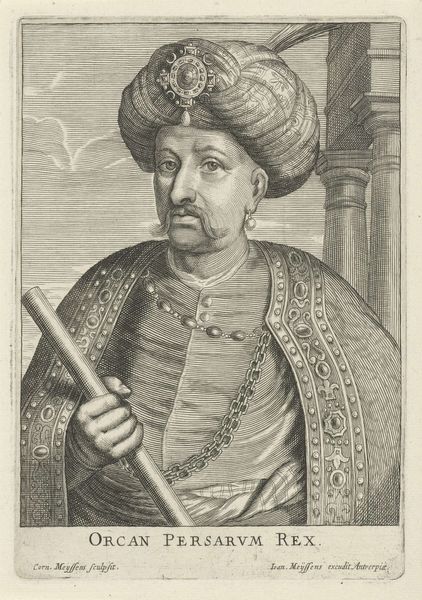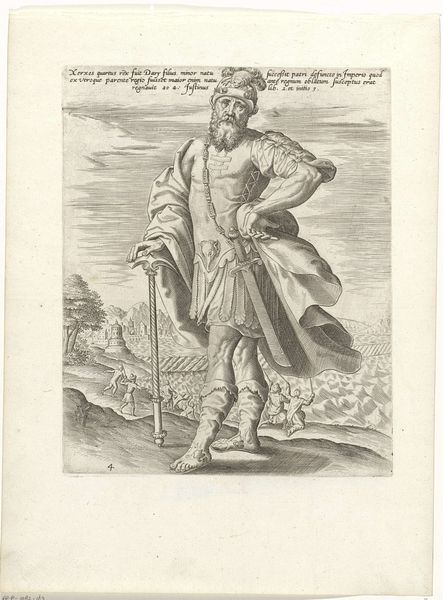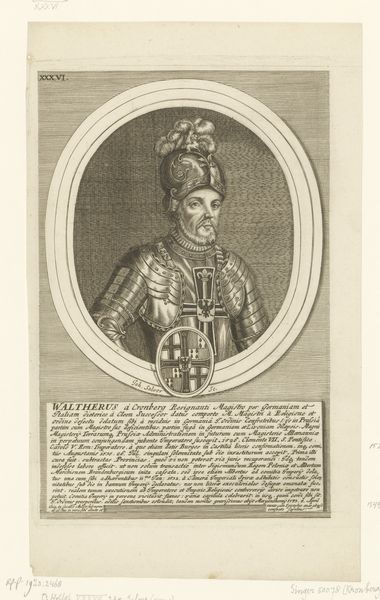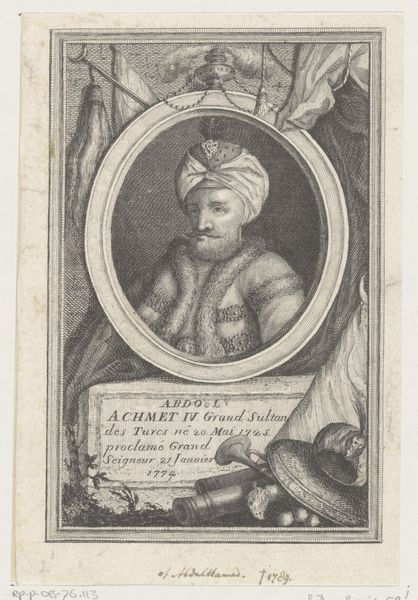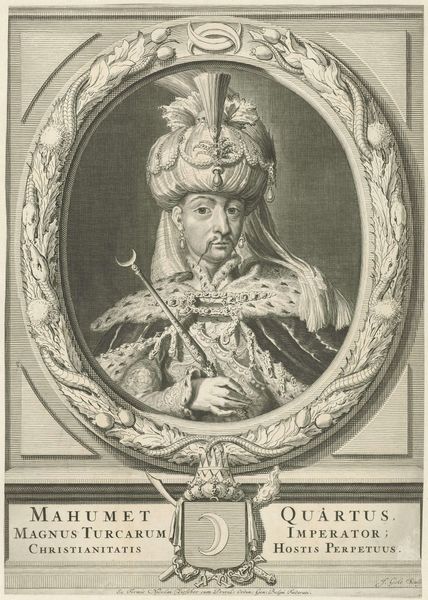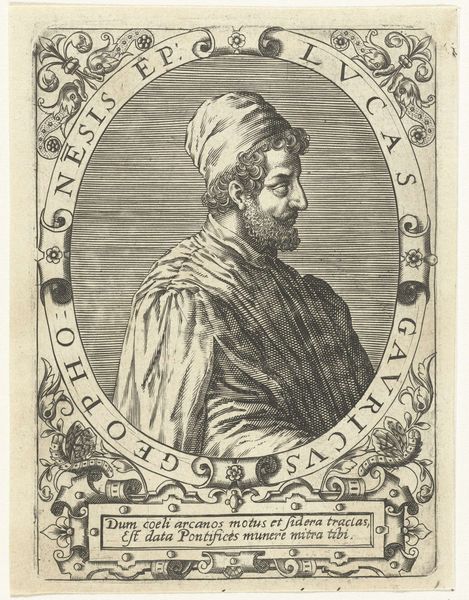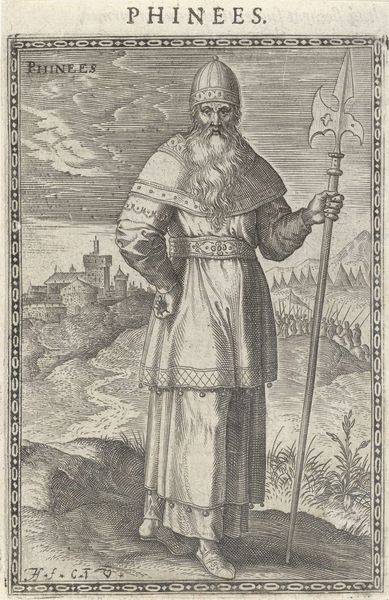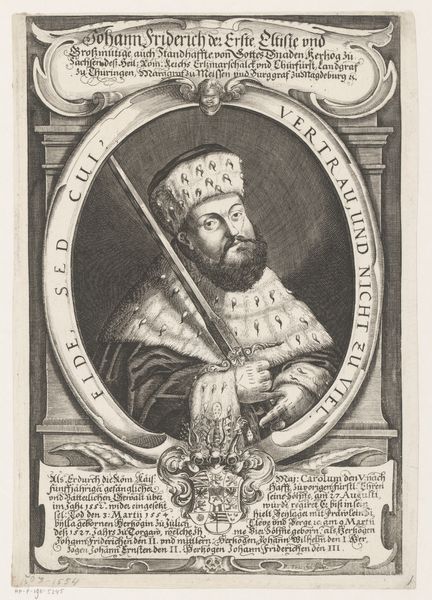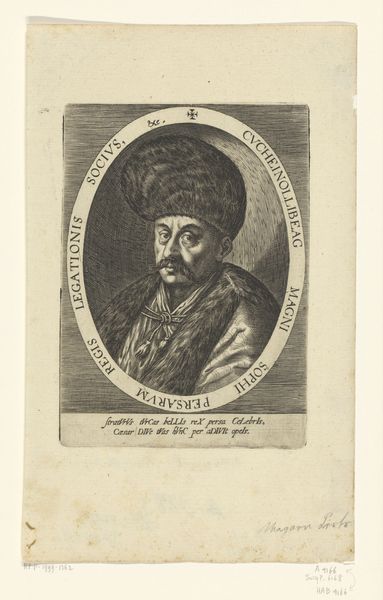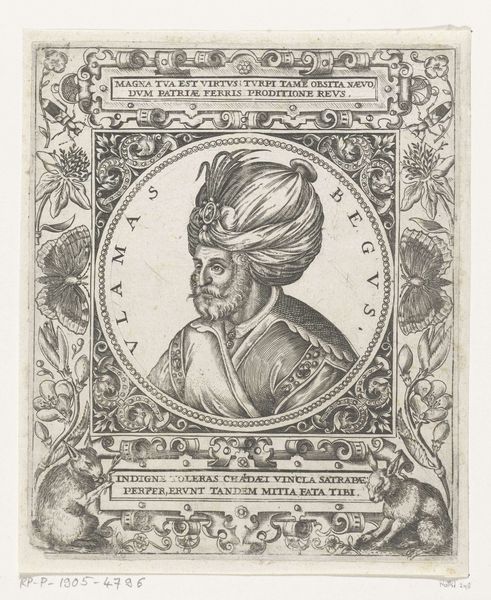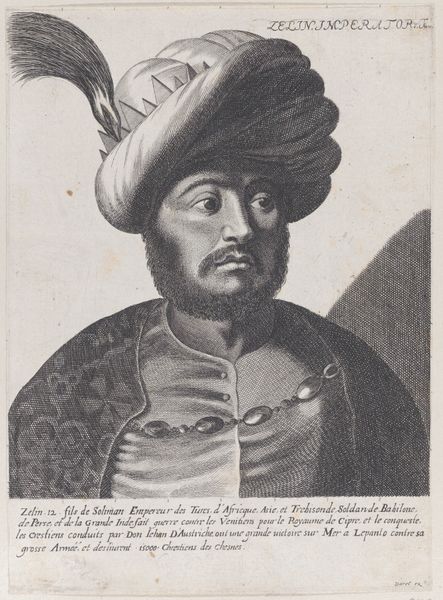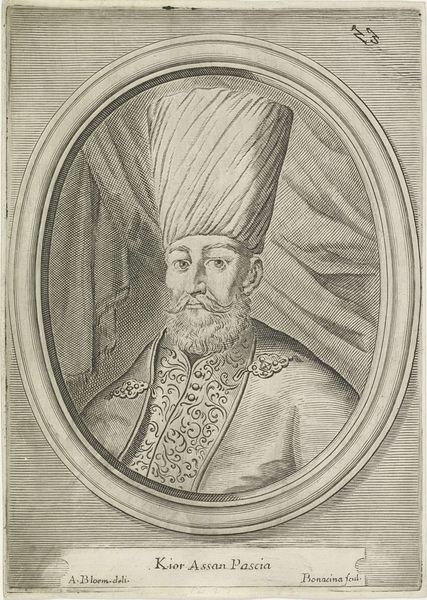
Portret van Osman Pascha als generaal van Turkse troepen 1681 - 1746
0:00
0:00
engraving
#
portrait
#
baroque
#
islamic-art
#
history-painting
#
engraving
Dimensions: height 146 mm, width 87 mm
Copyright: Rijks Museum: Open Domain
Curator: We are looking at a striking 17th- or 18th-century engraving currently residing at the Rijksmuseum. The piece is titled "Portret van Osman Pascha als generaal van Turkse troepen," attributed to François van Bleyswijck. Editor: My goodness, what a presence. Even in this small engraving, there's a theatricality. A strong sense of someone trying hard to project power and success. Curator: It's interesting you pick up on the theatrical element. Given its status as a historical portrait, it becomes important to think about its purpose. In what context was this image produced, and what was its intended audience? The text at the bottom declares Osman Pacha as "formerly, Comte de Bonneval" indicating an intentional message about identity, conversion, and the fluid political landscapes of the time. Editor: That text unlocks so much! It feels like there's a whole, complex story that one small caption suggests. To me, it immediately prompts questions: What was he like before? Why the conversion? How was this received back home? Curator: Precisely. By analyzing the work within a framework of power dynamics and cultural exchange, it serves as a key for discussions about orientalism, religious conversion as a mode of upward mobility, and self-fashioning within Ottoman society. The military scene depicted in the background, although tiny, can also act as a point to explore militarism and warfare. Editor: And the details! I'm zooming in on that turban and ornate robe! Even the smoke and figures in the battle scene – it’s all so meticulously rendered, almost obsessive. It also gives us some insight into how the West visualized Ottoman leaders, and likely reflects some bias in its representational choices. Curator: A pertinent observation. As you said, these works, even as they seek to represent historical figures and events, simultaneously become records of perception and cultural interpretation from a Western European lens. Editor: I leave with more questions than answers, a mark of compelling art. Curator: Indeed, a single image can illuminate a network of historical complexities, provoking insightful questioning of the dominant cultural narrative.
Comments
No comments
Be the first to comment and join the conversation on the ultimate creative platform.
